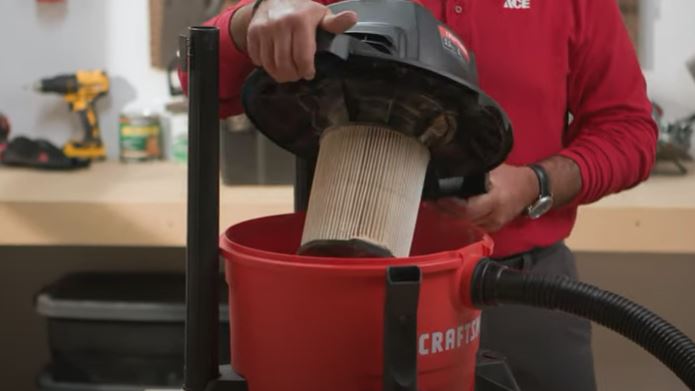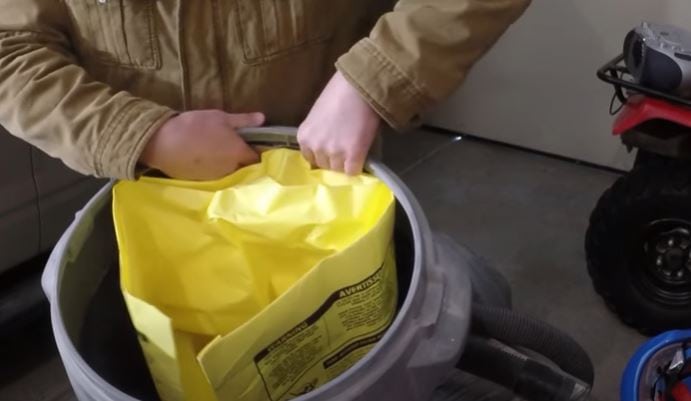How to Use Wet and Dry Vacuum Cleaner?
When we talk about buying a vacuum cleaner, the first thing that comes to mind is the dry vacuum cleaner – until we spill some liquid on your carpet. That’s when you think about the wet and dry vacuum cleaner.
Another reason we don’t really consider a wet and dry vacuum is because until a few years ago, they were only made for commercial purposes.
However, a wet and dry vacuum cleaner can really come in handy in a household if it’s appropriately used. And in this article, I’ll be giving you all the tips you need to know how to use wet and dry vacuum cleaner.
Tips to Use When Using a Wet and Dry Vacuum Cleaner
One thing you need to know about wet and dry vacuum cleaners is that they have very high suction power. While this is a good thing – it also means that they use the same power to clean a wine spot to dry a wet carpet. If the cleaner isn’t used correctly, this could be a huge problem for those fibers on your carpet.
Besides cleaning up liquid spills in the house, a wet-dry vacuum can pick up dirt and debris around the house. It’s not as effective as a dry vacuum cleaner, but it gets it done. Expect to strain a little when using a wet-dry vacuum to pick up wooden chips, nails, or pet hair.
However, using a wet-dry vac is easy, even if this is your first time using a vacuum of any kind.
Now let’s get to how you use it.
Step 1: Check the Filters in Your Vacuum

I know this seems irrelevant, but I’ll be explaining why it’s essential in the next section; for now – just go with the flow. For many vacuum cleaners, you can do this by lifting the top part of the cleaner and separating it from the tub.
Flip the panels on both sides of your vacuum cleaner and detach the vacuum head. You’ll find the vacuum filter underneath the top part.
Does your vacuum have a paper filter or foam filter? Hold on to that answer and read on.
Step 2: Put the Right Filter
If your vacuum comes with a paper filter, you may need to remove it if you’ll be cleaning up any liquids or wet surfaces. Some vacuum models allow you to leave the filter on if you’re just vacuuming small amounts of liquid. Check with your manufacturer, always remove the paper filter if you’re not sure.
On the other hand, if your cleaner uses a foam filter, it’s safe to use the vacuum to clean wet surfaces.
That said, if your main goal is to clean debris – paper or foam filter, you need to leave it intact when vacuuming. This is because vacuuming dirt without a filter allows all sorts of dirt to the motor, which slows it down, affects the performance of your vacuum and reduces its life span.
Besides, if you’re vacuuming in an enclosed room with no filter, all that dirt will blow right back – so it’s as good as not vacuuming.
Step 3: Ensure the Vacuum Bag Is Positioned Appropriately

If you’re using a vacuum cleaner that requires a bag, you need to place it correctly. The best place to install a vacuum bag is near the vacuum filter. A vacuum bag is essential when you’re cleaning dirty debris as it ensures your filters don’t clog and the debris doesn’t create a mess in the tub.
However, remove the bag and the filter if you’re vacuuming liquid messes.
Step 4: Select the Right Attachments
Every vacuum cleaner is unique, and it comes with different attachments. Some cleaners come with a crevice that allows you to reach all the hidden areas in your house. And others have brushes that allow you to clean all the debris on the surfaces.
The proper attachment depends on the type of surface you’re vacuuming as well as the nature of the debris.
For example, if you’re cleaning a wet mess, it’s best to go with a sponge attachment or an attachment with a flat surface. Remember to choose the correct size of attachments based on the size of the surface you’re cleaning.
Step 5: Switch on Your Vacuum
Only people who have ‘vacuumed’ without powering on the vac for a whole hour dancing to their favorite tunes and later realizing their mistake will underestimate the importance of this step.
Anyway, find the power button of the vacuum, switch it on and start vacuuming normally.
Take advantage of the vacuum’s high suction power, especially when cleaning a wet surface. The attachment will suck up all the liquid and pass it to the tub through the hose.
If the surface you’re vacuuming is extremely wet, you’ll need to repeat the process at least twice.
Note that with the right attachments, you can use a wet-dry vacuum to pick up cereals, nails, wooden chips, pet fur, etc.
Step 6: Empty Your Tub
If you’re cleaning a very wet surface, there is a chance that your tub will get full in the process. You’ll get a very pitched voice from your vacuum indicating that the tub is full. Note that you can’t continue vacuuming when the tub is full because there is no space for the debris or liquid spills to go.
If your vacuum comes with a drain, all you need to do is switch the vacuum power off and open the drain. In most vacuum cleaners, you can empty the tub by simply removing the top cover of the tub and pouring out the water.
Step 7: Use a Garden Hose Pipe to Drain the Water
Some vacuum cleaners come with a pump to attach a garden horse, so you don’t have to drain the water manually from the tub.
If your vacuum cleaner has this option, simply attach the garden hose to the pump and direct it to drainage, a garden, or wherever you want to pour the water.
Step 8: Clean the Tub
Once you finish cleaning your surfaces, it’s essential to make sure you leave the attachments you used clean. Start by cleaning the tub properly and drying it before storing it.
The next thing you need to clean is the filter (if used), clean it with soapy water and give it enough time to dry before screwing it back. If you’re using a paper filter, consider replacing it.
Frequently Asked Questions
Can wet/dry vac pick up water?
It might sound like a no-brainer but it’s a valid question. A wet/dry vacuum can pick up water if it is designed to do so. Some vacuums are specifically designed to pick up both wet and dry debris, while others are only meant for dry materials. It is important to check the specifications of your vacuum cleaner.
Do you remove filter when using wet vac?
If you’re using your wet-dry vac or “shop vac” to clean a dry surface, check that the filter has been correctly placed. You’ll need it—the filter prevents dust from blowing out of the top while you’re cleaning. For a wet surface, you won’t need the filter. Simply remove it before you start sucking up water.
Do you need to use the bag in a wet and dry vacuum?
No, you do not need to use the bag in a wet and dry vacuum. The bag is only necessary when vacuuming up dry materials. When cleaning a wet surface, the drenched debris will go straight into the vacuum’s holding tank. If you want learn more, we have a dedicated section for why using a shop vac without a filter or bag is a bad idea.
Why wet/dry vacuum suction get weak?
There can be a few reasons why the wet/dry vacuum suction might be weak. If the filter is clogged, it can reduce the airflow and the suction power. If the bag is full, it will also reduce the airflow. If the vacuum cleaner is not cleaning close to the floor, it will have less suction power. It’s best that you seek professional help if you are not sure how to fix a vacuum cleaner with no suction power.
Finals Words
Although we are used to drying vacuums, it doesn’t mean that a wet-dry vacuum isn’t practical. A wet-dry vacuum is crucial when you’re cleaning wet surfaces, for example, after a water leakage or accidentally spilling some wine on your carpet.
Remember that a normal vacuum doesn’t have the suction power needed to dry a wet carpet or any surface. On the other hand, a wet-dry vac is designed for this.
I hope my guide has fully answered how to use wet dry vacuum cleaner. But what if you have no vacuum, how to dry a wet carpet without vacuum? We shared some methods of Drying wet carpet without a vacuum in the site, you can give it a read or share them with friend with no vacuum.
Have you ever used a wet-dry vac before? Did you like it? Let us know in the comment section.

